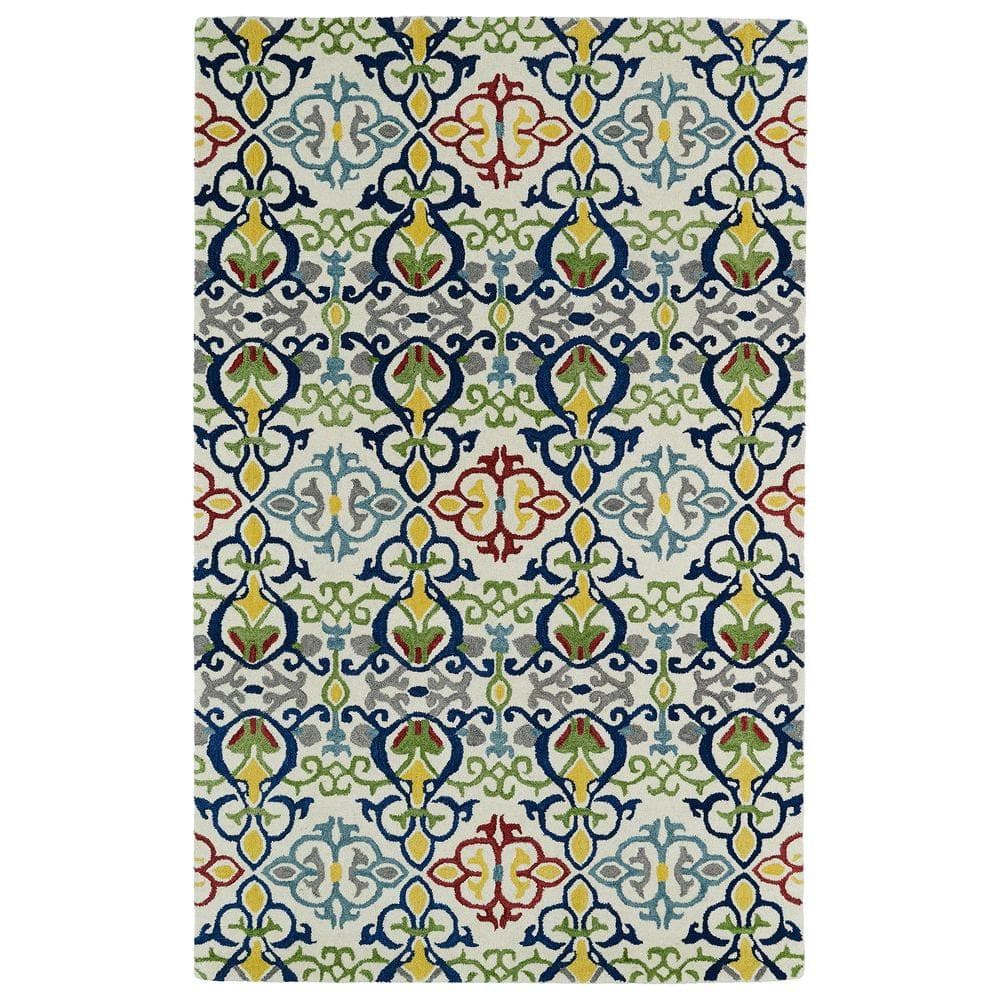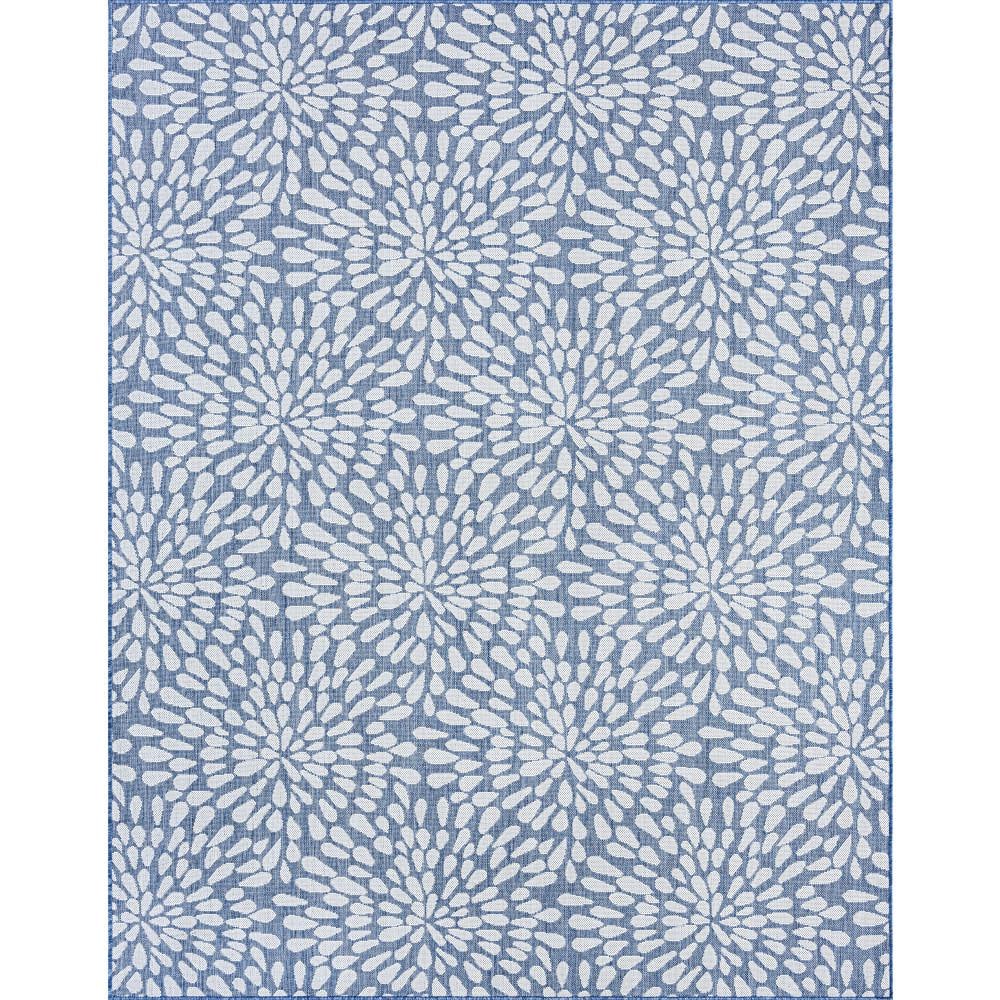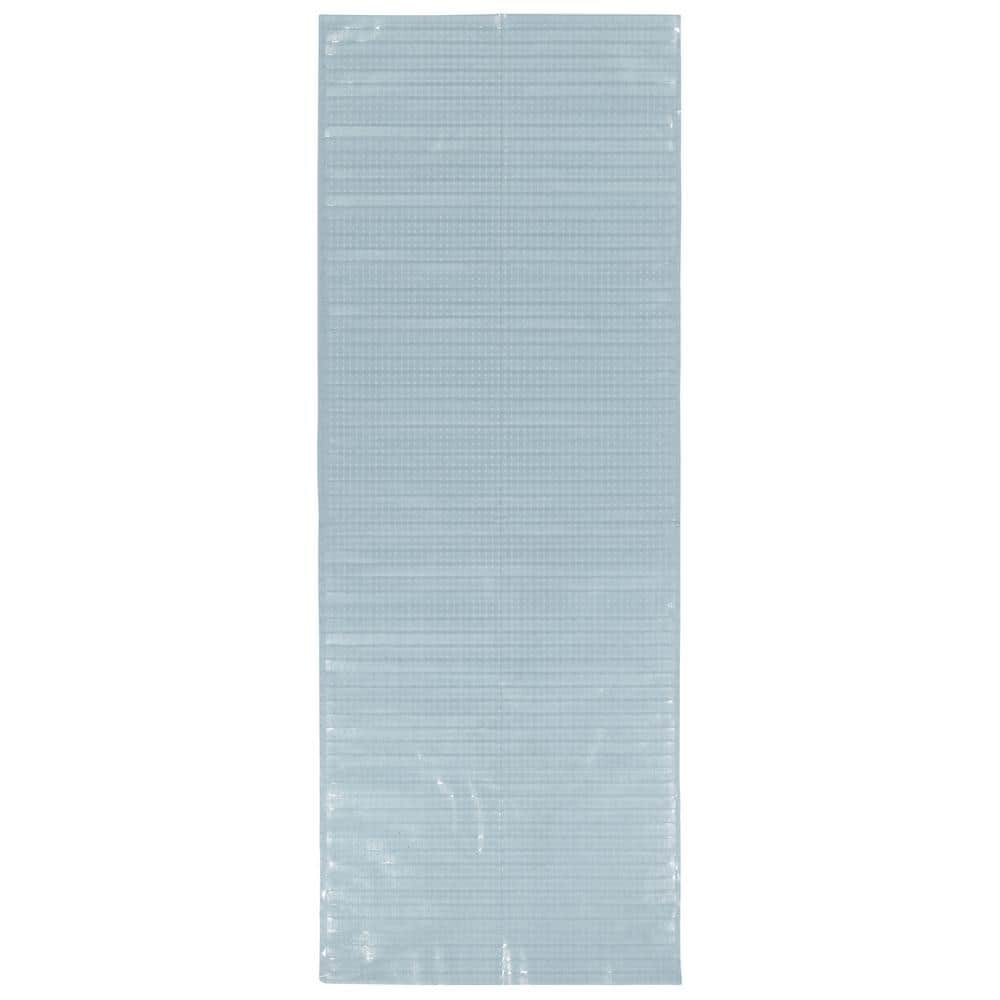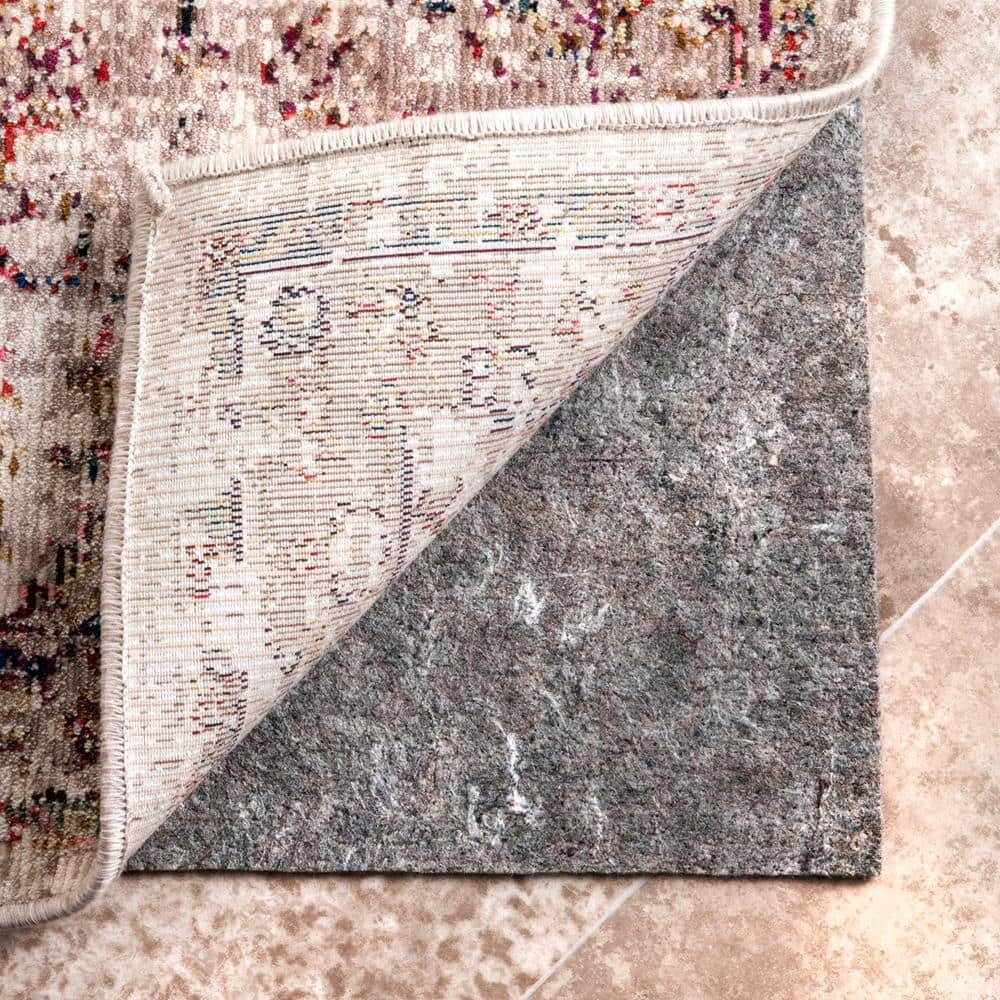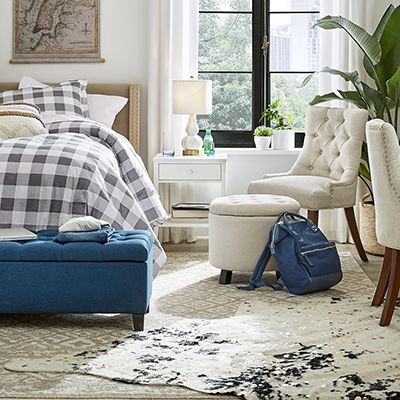Types of Rugs
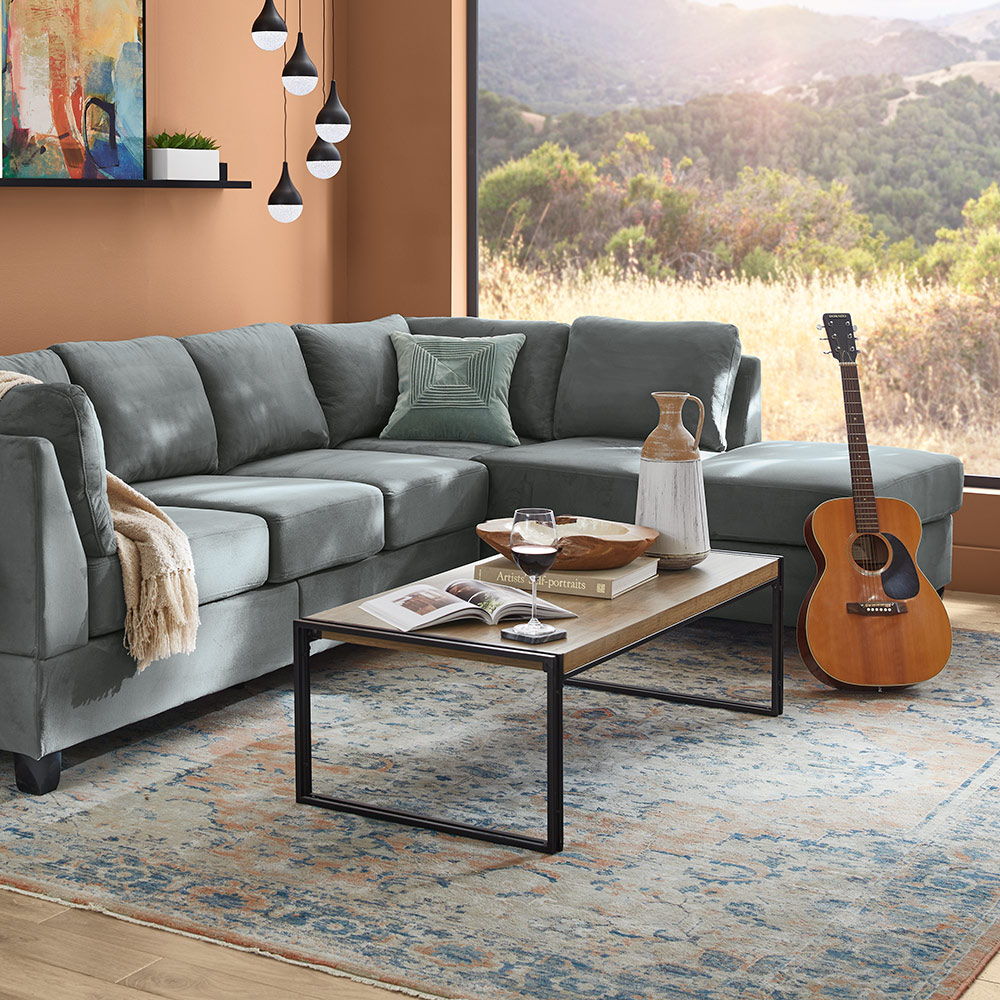
Last updated September 7, 2023
Area rugs add comfort and style to your home. Whether you need a colorful runner rug or a large rug to anchor a bedroom, this guide outlines the different types of area rugs available, so you can make the best choice for each room.
Table of Contents
Rug Styles
Animal Print Rugs
Border Rugs
Chevron Rugs
Coastal Rugs
Distressed Rugs
Rug Styles
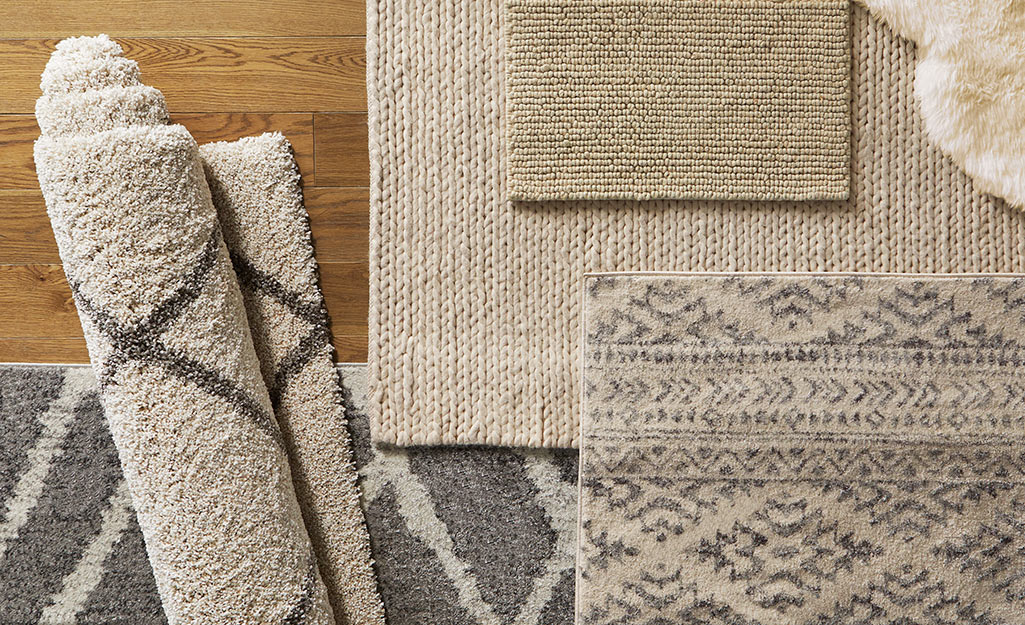
True Oriental rugs are woven or knotted by hand using wool or silk fibers, and feature ornate patterns. Traditional rugs, which are sometimes mistaken for true Oriental rugs, are usually rectangular. They are also found in other shapes such as ovals or octagons. Persian rugs often have a central medallion framed by an intricate border. Both Oriental and Persian rugs are ideal for formal areas such as dining rooms, living rooms and sitting areas.
American rugs feature patterns based on colonial styles and work well with traditional, country and casual decor.
Dhurrie rugs are economical and available in a wide range of colors. They work well in children's rooms and playrooms because of their durability. They can be used as transitional rugs in sun porches or garages. They are also a smaller, less expensive alternative to an outdoor rug.
Bathroom rugs and kitchen rugs are often overlooked in planning decor. However, a correctly sized rug in these areas adds interest and makes the space more comfortable. When using a rug in a room with floors that tend to get wet, be sure to add rug anchors.
If you're ever in doubt about which rug style or color to choose, you can't go wrong with a neutral rug. Neutral rugs blend nicely into the color scheme of a room, no matter what style, pattern or material the rug is made from.
A door mat keeps your floors cleaner and more protected. It keeps outside dirt from making its way inside on the shoes of your family and guests. The right rug can also increase curb appeal and set a welcoming tone with visitors.
Animal Print Rugs
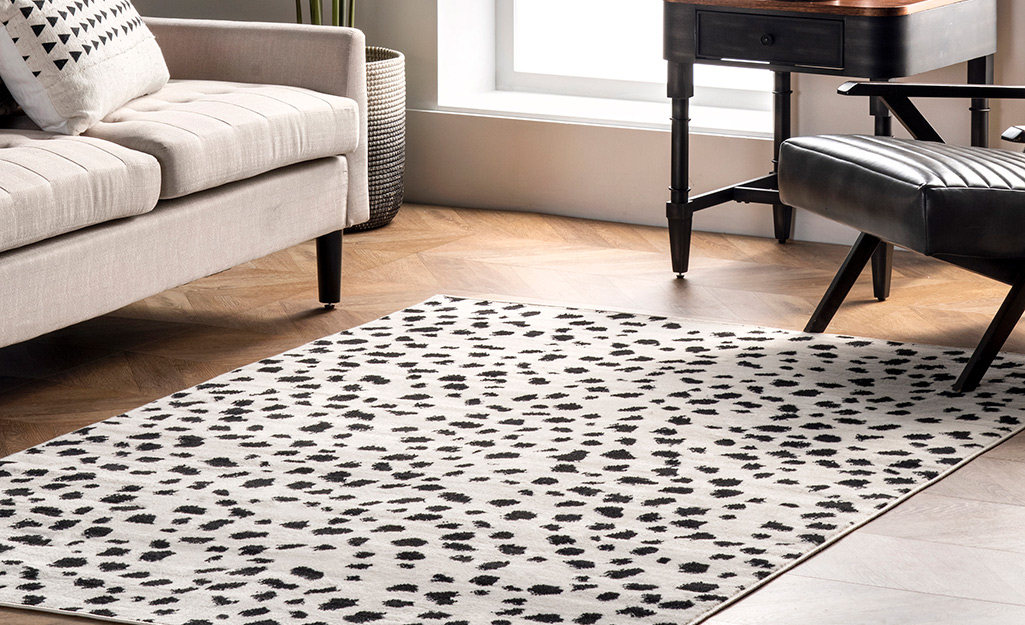
Animal Print rugs have an all-over pattern or parts of a pattern. Cowhide rugs and sheepskin rugs are popular and versatile.
Border Rugs
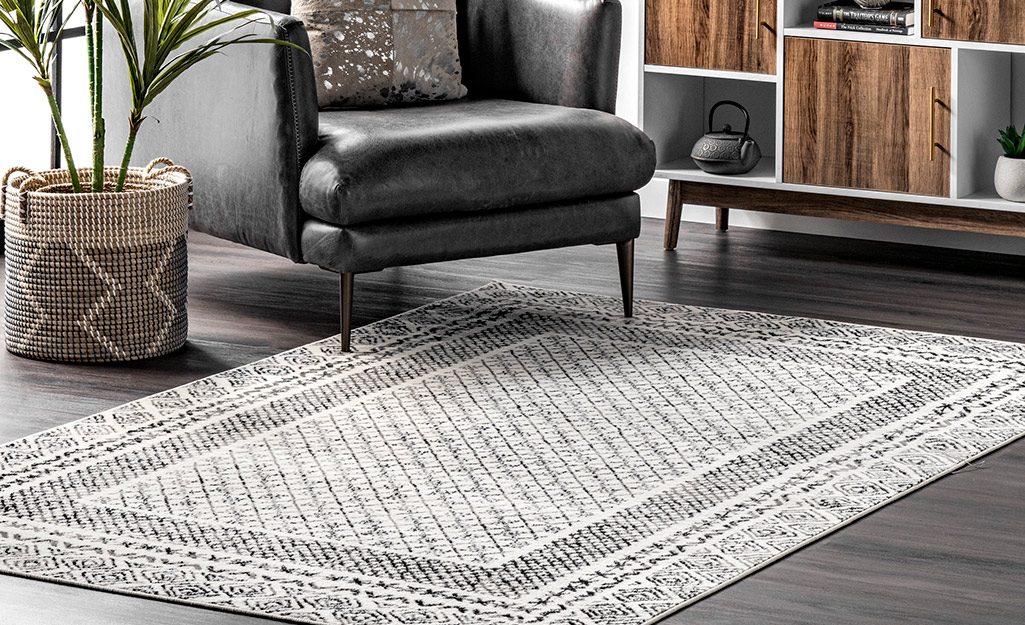
Border rugs feature a design on the border, or perimeter, of the rug. The border can also be inset.
Chevron Rugs
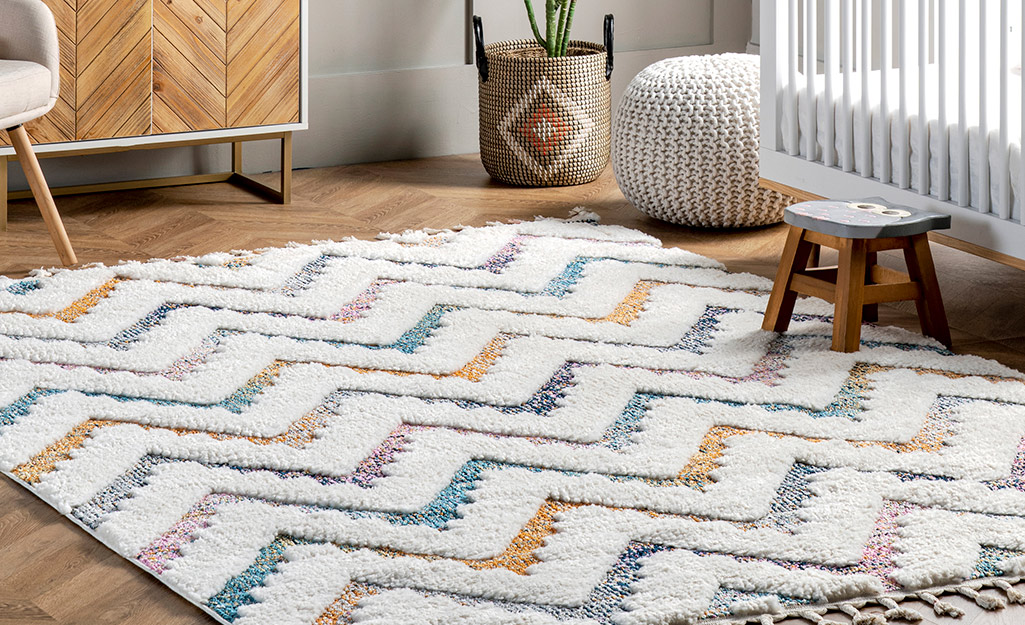
Chevron rugs have a design of connected V shapes that create a zig-zag stripe pattern.
Coastal Rugs
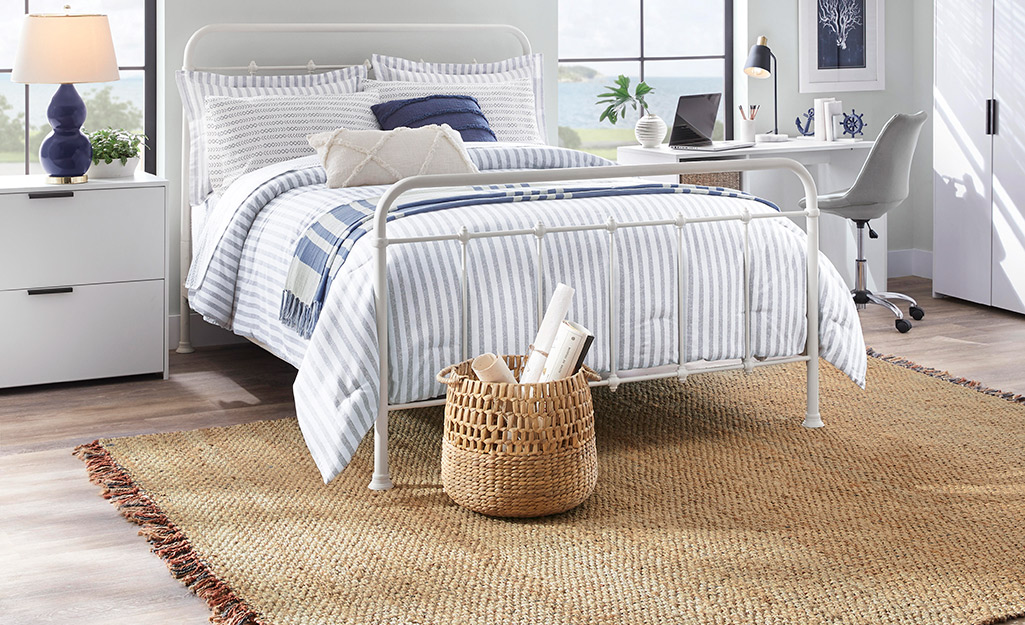
Coastal rugs feature elements of the ocean, sea or beach. These rugs are typically waterproof or made for outdoor living spaces.
Distressed Rugs
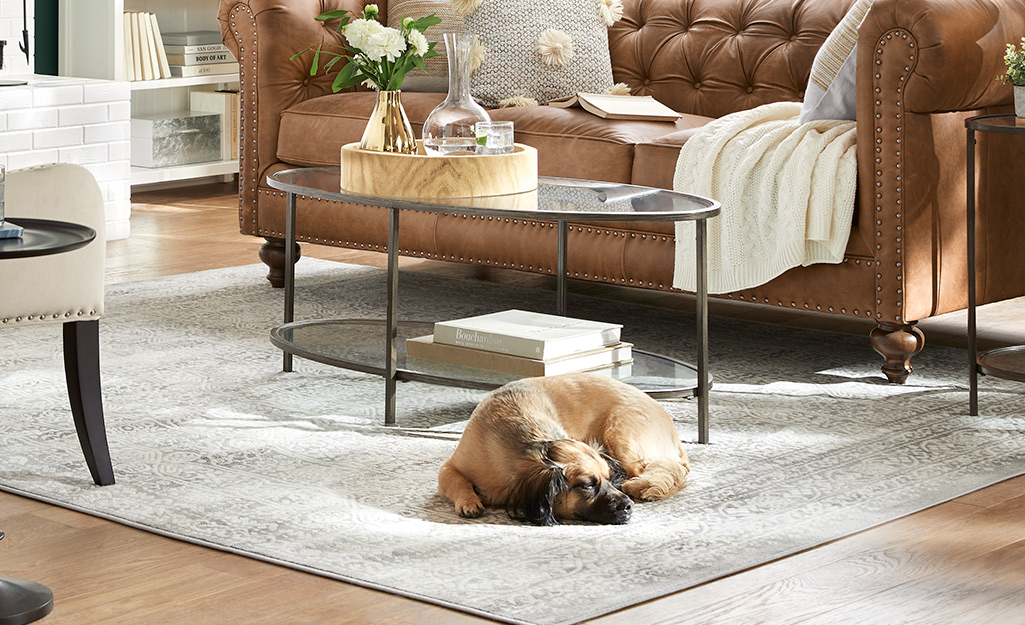
Distressed rugs look worn, aged and faded. Parts of the pattern might be missing on purpose from faux wear and tear.
Floral Rugs
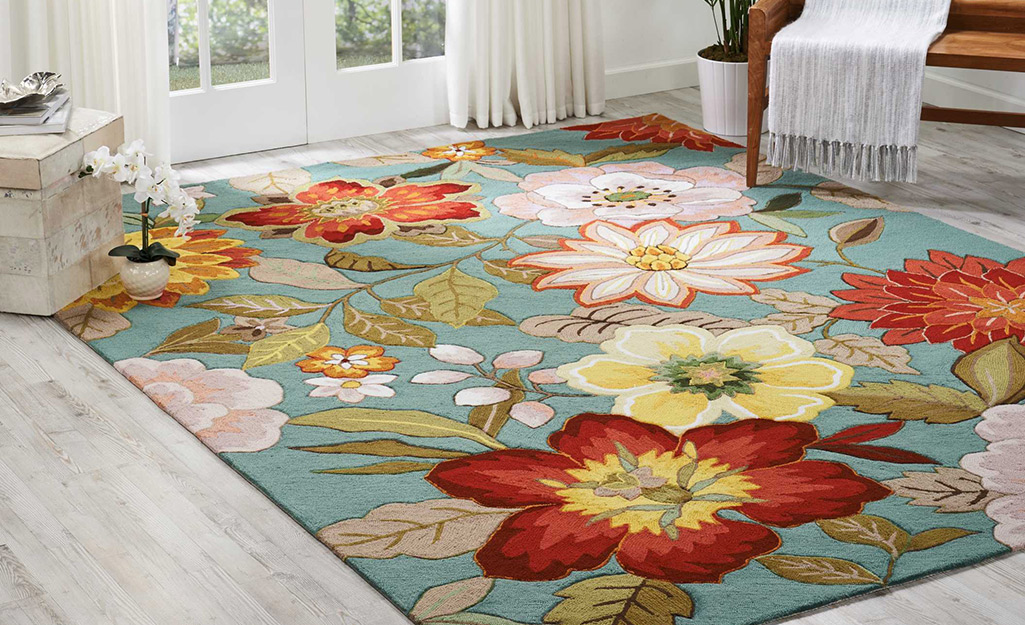
Floral rugs are patterned with flowers or elements of flowers.
Geometric Rugs
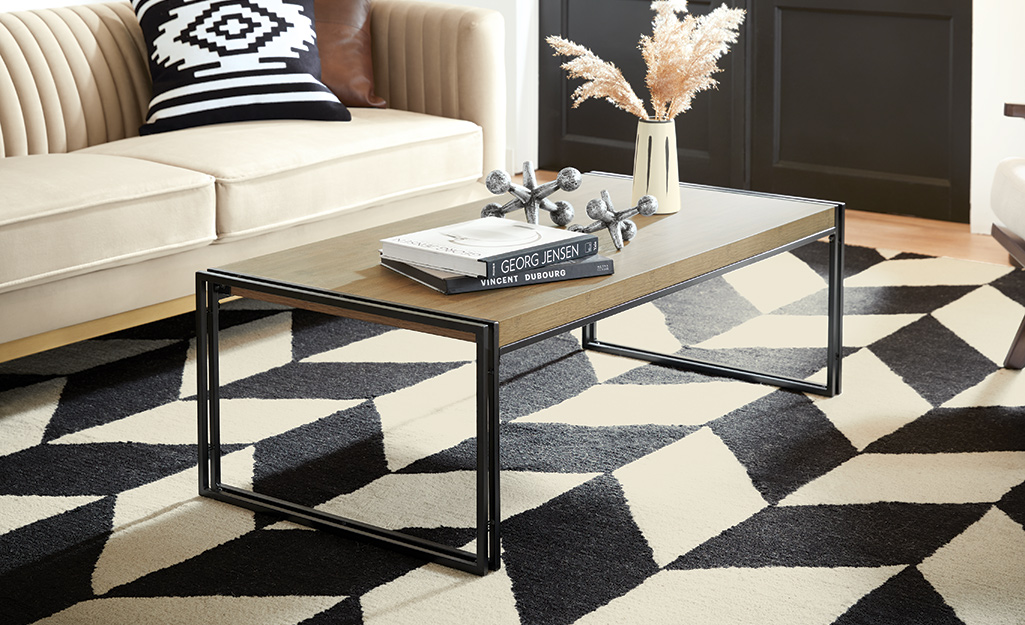
Geometric rugs have patterns in geometric shapes.
They add interest to decor through color and the various shapes they feature.
High-Low Rugs
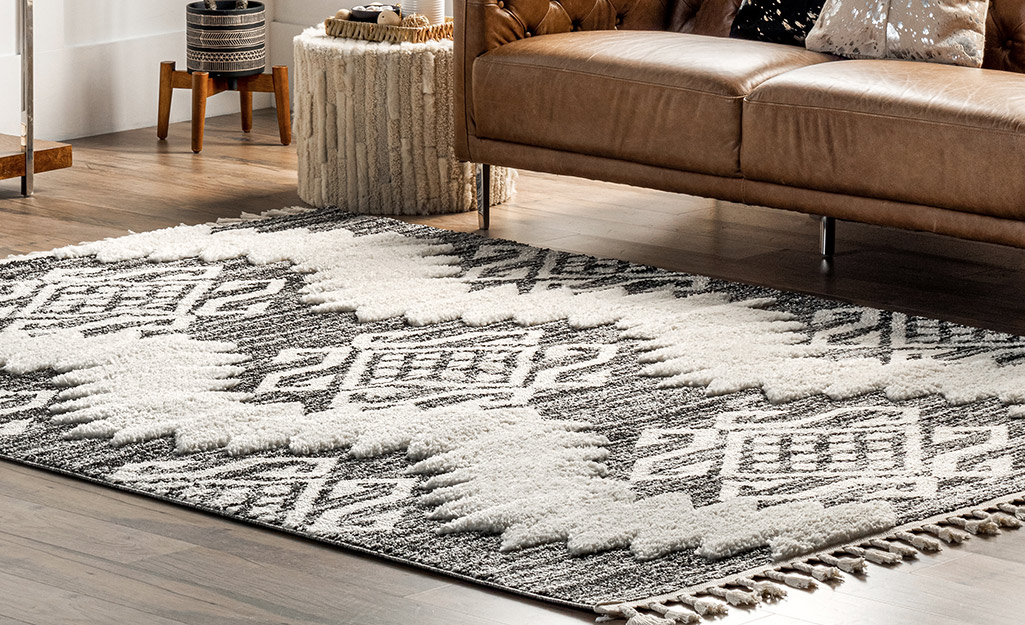
High-low rugs or sculpted rugs use low-pile and high-pile tufts to make a pattern or design.
Ikat Rugs
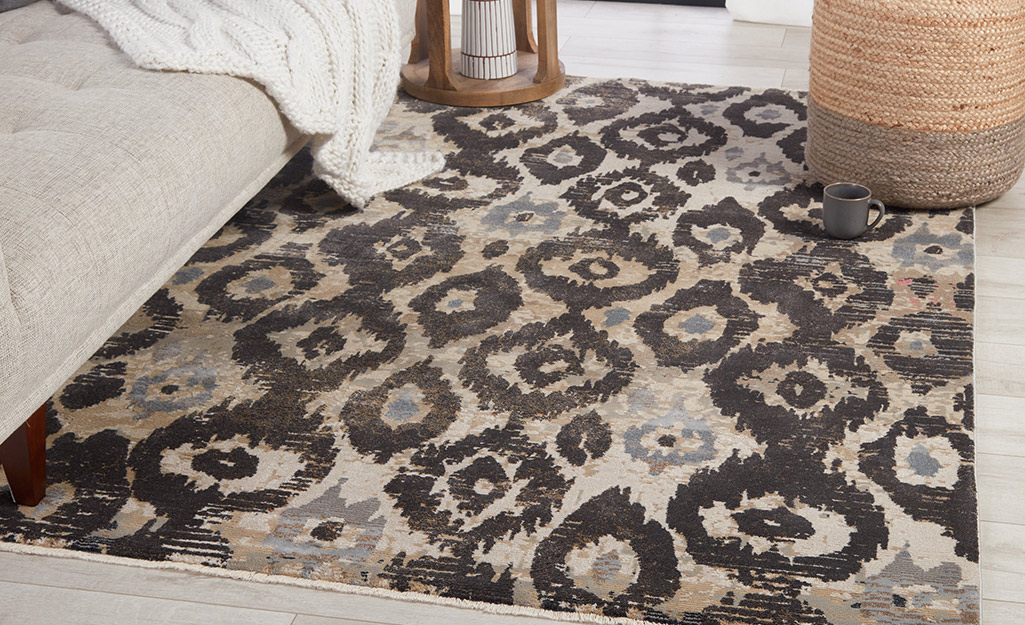
Ikat rugs have a global look with blurred colors in multiple hues and complicated patterns.
Cottage Rugs
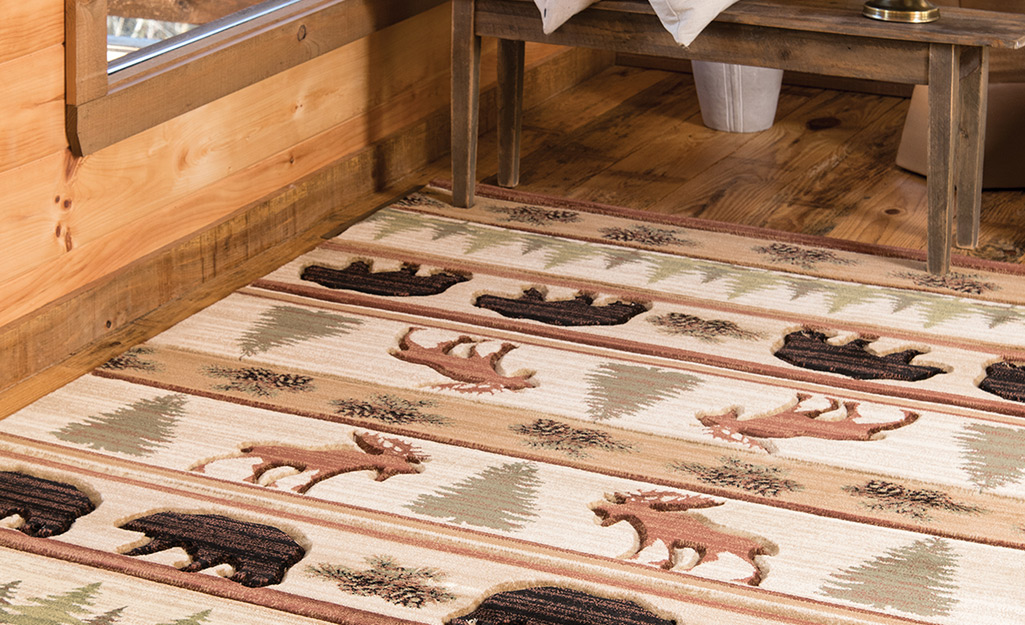
Cottage rugs feature elements of the mountains, country or woods. Cottage rugs should make a room feel cozy and inviting.
Medallion Rugs
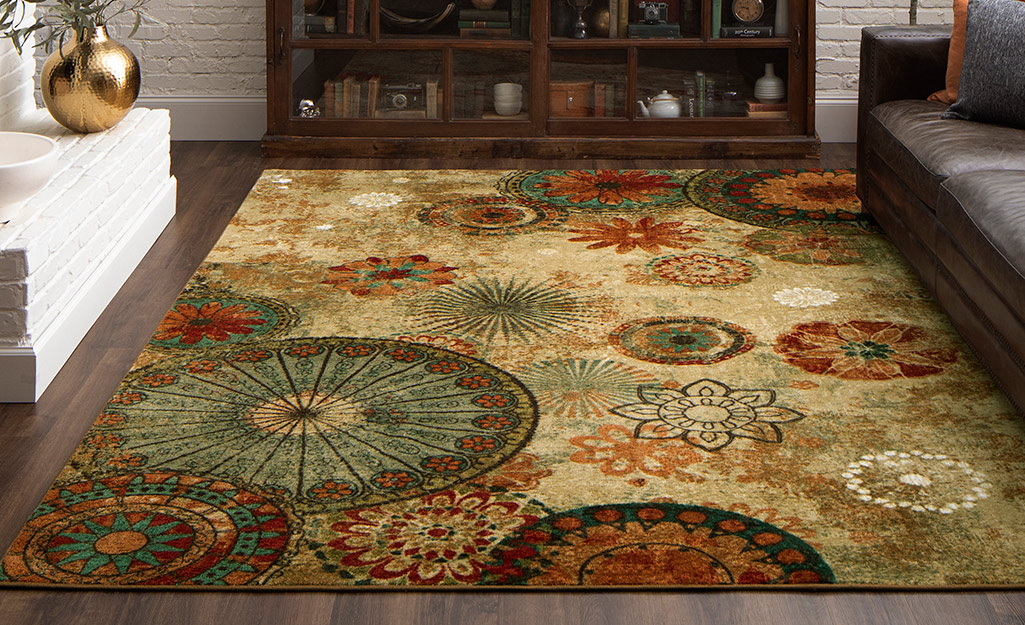
Medallion rugs have an all-over design that resembles stamped shapes that are circular or organic. The pattern can be symmetrical or asymmetrical.
Novelty Rugs

Novelty rugs are themed rugs featuring maps, clocks and other imagery. Kids rugs feature maps, cars, dinosaurs and more. Sports rugs have printed or woven sports logos, icons and imagery.
Oriental Rugs
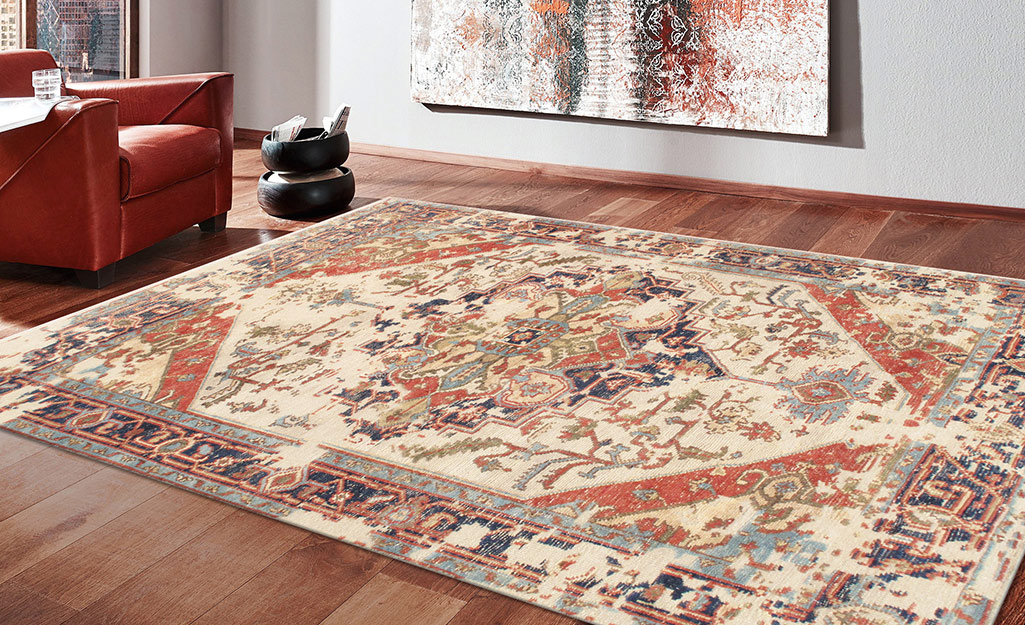
Oriental rugs are traditional, ornate hand-knotted rugs composed of several decorative borders, a field pattern and possibly a central ornate medallion.
Overdyed Rugs

Overdyed rugs have a pattern that has been overdyed with a new color, leaving the light and dark shapes of the original design to show as a faded pattern.
Plaid Rugs
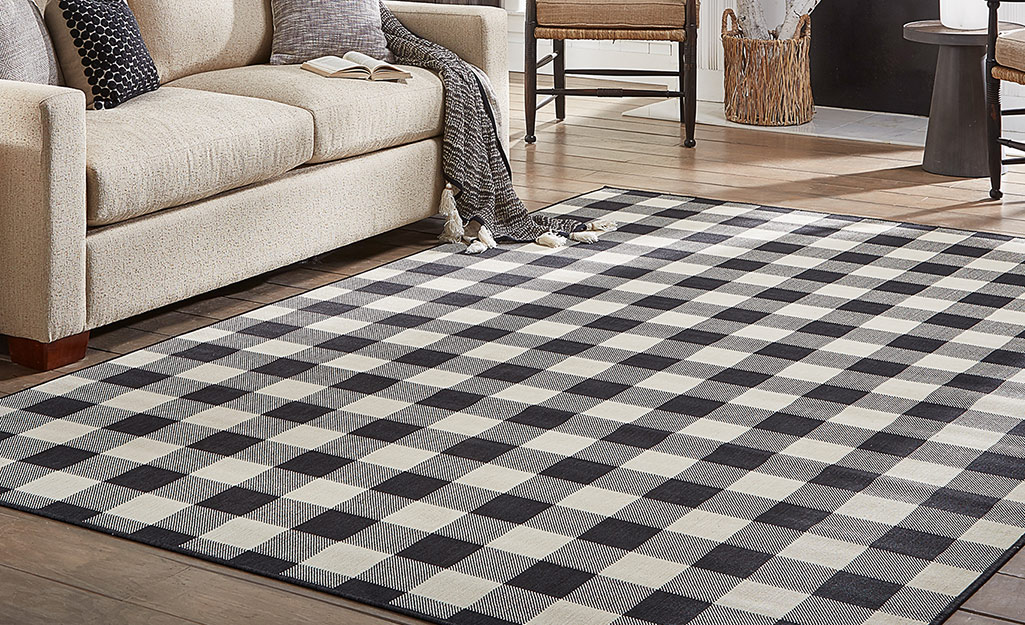
Plaid rugs feature transparent perpendicular lines at different widths that overlap each other to form squares.
Shag Rugs

Shag rugs display long pile tufts of yarn to create an overall texture.
Solid Rugs
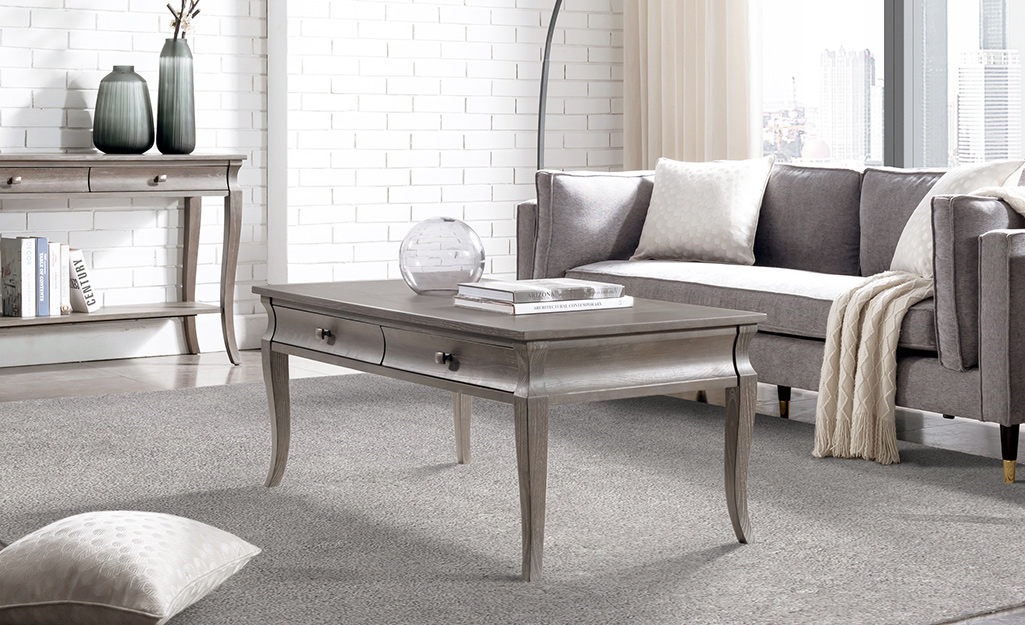
Solid rugs often use a gradient or ombre effect. This creates a fading effect. Solid rugs might appear to be one color but have different tones of another color to create a “heathered” look.
Southwestern Rugs

Southwestern rugs are influenced by Native American textiles from many different tribes.
Striped Rugs
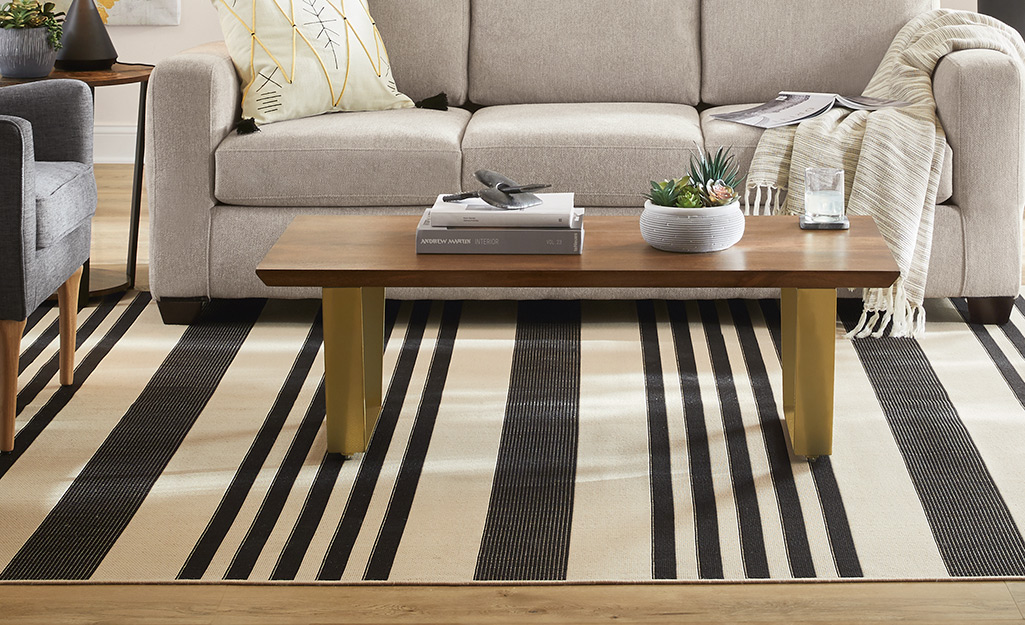
Striped rugs have stripes or bands in different colors or textures.
Trellis Rugs
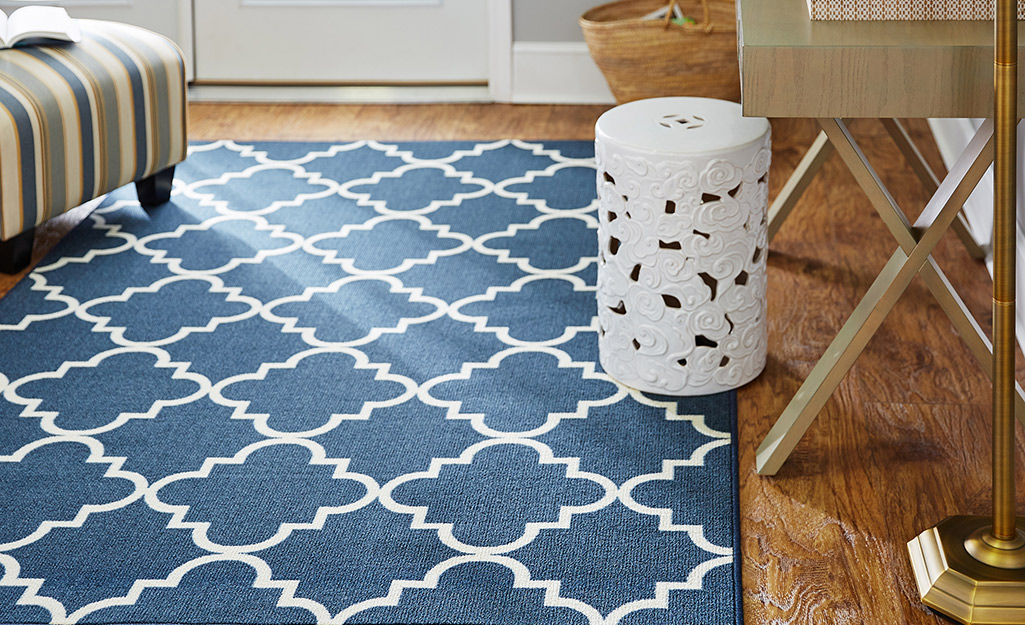
Trellis rugs display connected lines in geometric, uniform shapes to create a lattice design.
Watercolor Rugs
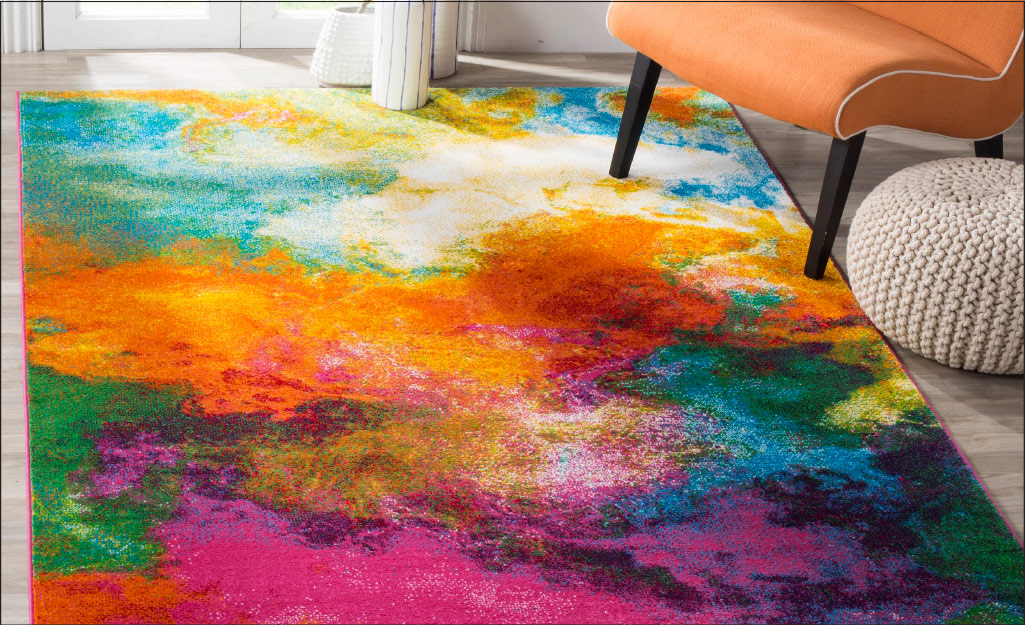
Watercolor rugs resemble abstract brushstrokes or paint splotches.
Construction & Materials
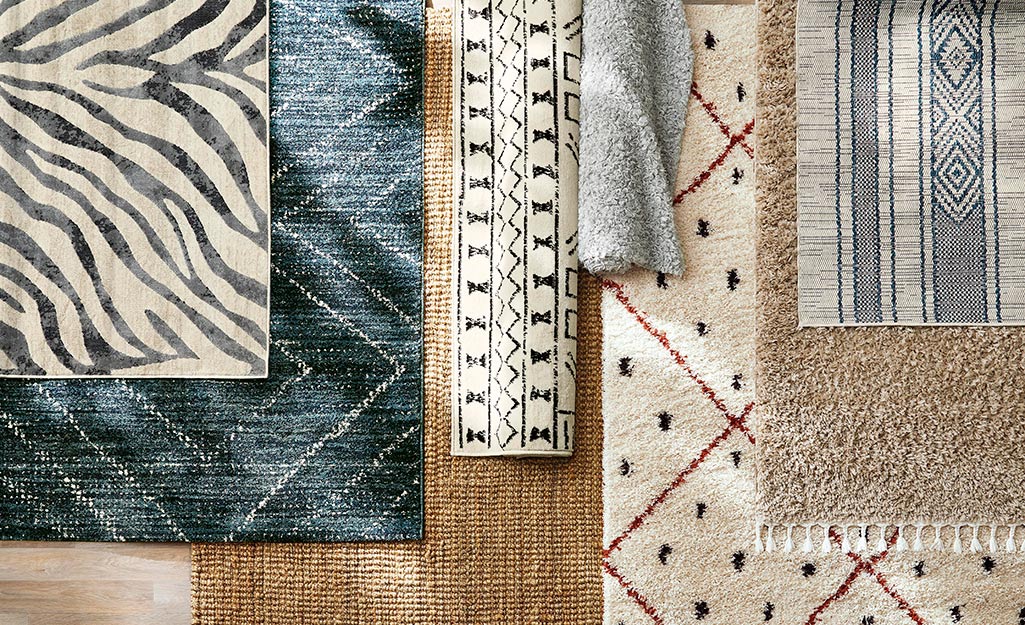
Whether a rug is handmade or produced by a machine will affect the rug's longevity. Wear and tear will also influence the lifespan of a rug.
Deciding on a natural or synthetic fiber will depends on the style of rug you want and how much traffic you expect to have in an area. Fibers may be staple fibers, which use short lengths of fiber that shed at first. Or the rug can be made of bulk continuous filament which uses continuous strands of nonshedding fiber.
Many synthetic rugs are durable enough to be used outdoors.
Resilience measures how well fibers bounce back from crushing under the weight of heavy furniture. Look for rugs with high resilience if you plan to place them underneath furniture or in high-traffic areas.
If you have children or pets in the house or intend to place the rug in a high-traffic area, look for rugs labeled stain resistant or machine washable to make cleanup easier.
One last consideration is to see how the rug is constructed. This can determine its longevity, or how long it can withstand wear and use. The following are the most common ways that rugs are constructed.
Hand-hooked rugs have a yarn pile (the thickness of the rug) made of loops so that the effect is soft and nubby. These types of rugs are durable and, if handmade, are thicker and more dense than their machine counterparts. Because the loops crush with frequent wear, they’re generally best used in low-traffic areas. Pet nails can also snag the fibers. Hand-hooked rugs can also refer in general to rugs with a looped pile, so be sure to check before purchasing to ensure you’re getting the construction you want.
Hand-tufted rugs are made in the same way as hand-hooked rugs. However, rather than leaving the loops in tact, the tops of the loops are cut to create a plush effect that’s soft underfoot. Shag rugs are tufted with longer pile. These rugs are usually inexpensive and therefore a good choice if you like to change out your rugs to reflect new styles or seasons. Hand-tufted rugs shed, especially at first, so be prepared to vacuum them frequently.
Hand-knotted rugs are densely knotted and detailed. They are constructed on a loom and feature hand-tied threads and yarn that create the design, feel and texture of the rug. Because they can be time-consuming to make, hand-knotted rugs are a more expensive option. The higher the density in hand-knotted rugs, the higher the quality.
Flat-weave rugs are woven on a loom or made by hand. This is a traditional type of construction where vertical yarns are woven through horizontal or weft yarns. They don’t have a pile and can be reversible. Flat-weave rugs work well in high-traffic areas and places where a thick pile can get in the way, such as near doors.
Machine-made rugs can be almost any type or style. The pattern is pre-set to create the desired pattern and construction which produces perfectly even piles and patterns. Machine-made rugs have high resilience and stain resistance, but the construction process can be hard on the fibers, so these rugs tend not to last as long.
Natural Materials
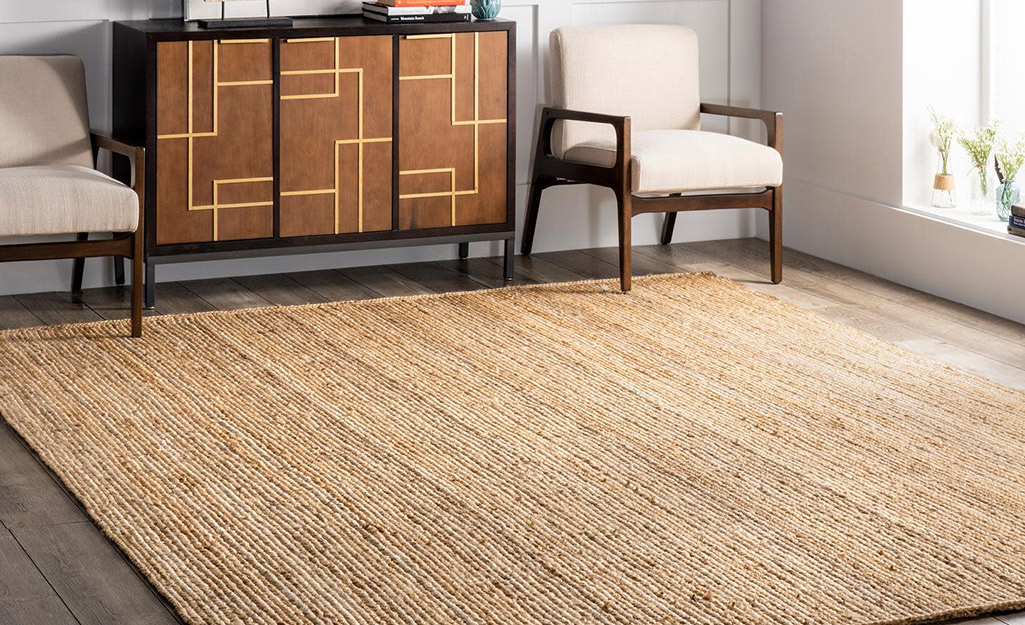
Cotton Area Rugs:
- Are durable
- Have a soft feel
- Available in a wide range of colors
Jute Area Rugs:
- Are known for their beautiful natural coloring
- Have a soft feel
Sea Grass Area Rugs:
- Are easy to clean
- Feature natural coloring with a rustic look
Silk Blend Area Rugs:
- Provide highlights in wool rugs
- Have a high-luster look
- Have a soft feel
Sisal Area Rugs:
- Are made strong natural fiber
- Have a coarse texture
Wool Area Rugs:
- Have a soft, thick and luxurious feel
- Are static-resistant
Synthetic Materials
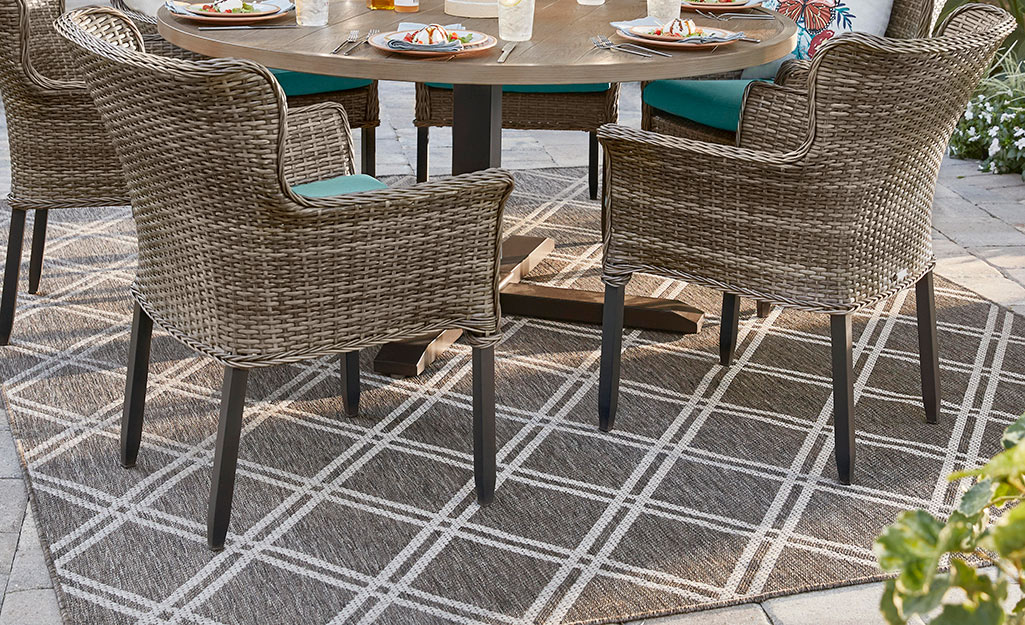
Rugs are availlable in a range of synthetic materials.
Nylon rugs are:
- Strong and resilient
- Ideal for high-traffic areas and placement under heavy furniture
- Perfect for concealing and resisting stains and soil
- Available in many colors
Polyester rugs are:
- Perfect for retaining color clarity
- Easy to clean
- Ideal when a plush feel is desired
- Great for living areas
Polypropylene rugs are:
- Easy to clean
- Moisture and mildew resistant
- Best for low-traffic areas
- Good for outdoor use
Rug Sizes
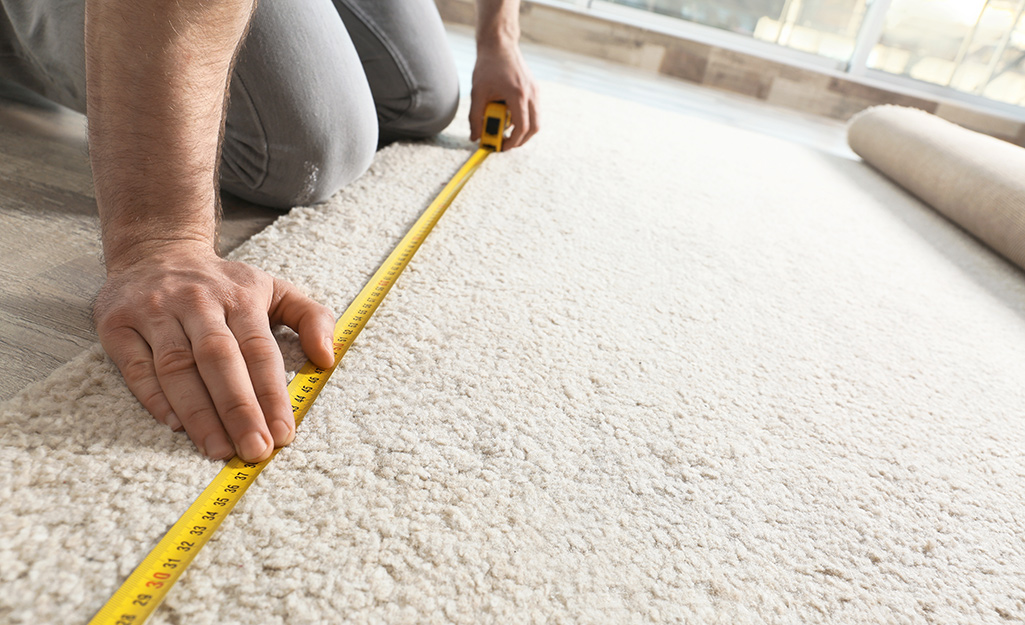
Large rugs can dominate a room, so it's important to choose one that is proportional to the size of the room. When purchasing a rug for a large room, select the rug first and then the furniture, drapes and other features. Smaller rugs should be purchased after furniture and other accessories as a complement to your existing decor.
Check out our rug sizes buying guide for a detailed look at rug sizes and how to select the right size and shape for any room.
Care & Considerations
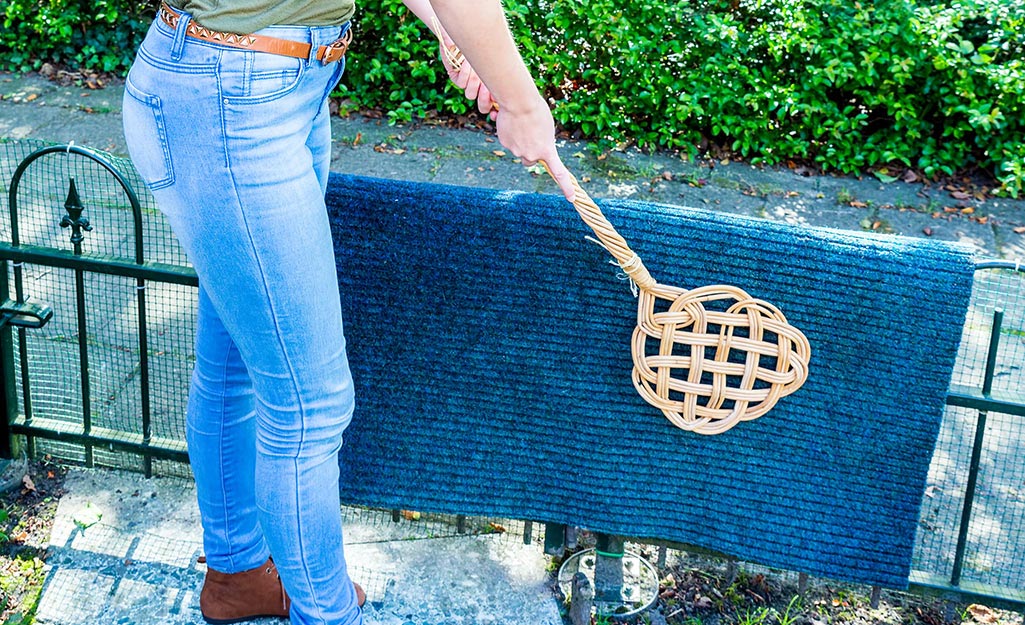
In considering colors, think about the overall feel you want for the room. Darker hues create a cozy, intimate feel. Light colors complement open spaces and make small rooms feel spacious.
Follow manufacturer’s instructions to properly care for your rugs. It is usually safe to clean rugs with water or steam at least once or twice a year. Refer to the tag for instructions, especially when using chemical cleaners. Vacuum high-traffic areas frequently and clean spills quickly by blotting rather than scrubbing.
Rotate rugs every six to 12 months to prevent uneven wear. Check the back of rugs periodically to monitor potential damage from moths or carpet beetles.
A rug pad is a thin protective sheet that fits under an area rug. It is made of rubber or another substance that provides grip. Use a rug pad underneath all area rugs, especially on hardwood floors.
A rug pad should be cut to fit underneath the rug. The rug should extend over the pad by about an inch on each side. This space allows for an obvious change in level between the rug and the floor.
Rug pads prevent slipping and provides greater comfort underfoot. Rug pads, like carpet padding, extend the life of your rug by holding it in place. They also provide extra cushion and insulation. Rug pads can prevent spills or dyes from seeping through the rug and staining the floor or carpet.
If you don't use a pad, be sure that rug corners are out of the way in high-traffic areas. Many scatter rugs feature nonskid backing. It can keep a rug from sliding out from underfoot you when you step on them, even if the floor beneath them is smooth.
Tip: If you have an expensive rug or are dealing with a particularly tricky stain, contact a professional rug cleaner for assistance.
With a little research, you can find the perfect area rug for any room in your house. Consider the types of rug materials and then select the color and design that will work best with your decor.
Need help identifying a rug design or material? Find products fast with image search in The Home Depot Mobile App. Snap a picture of an item you like and the app will show you similar products.
